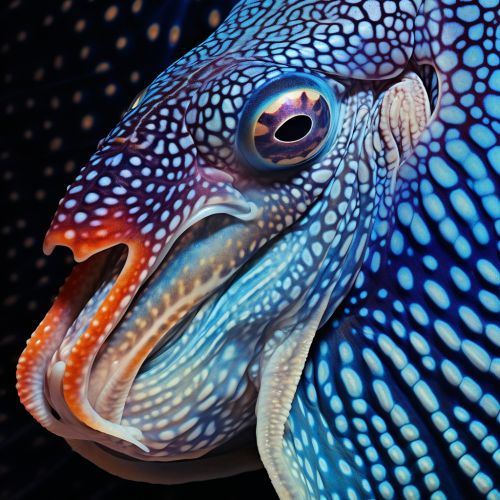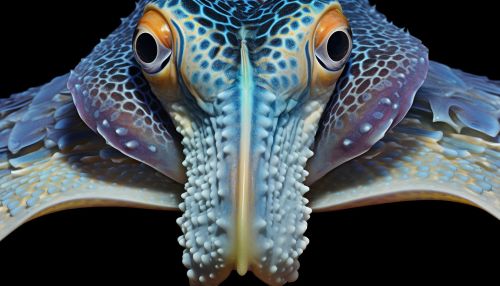Cuttlefish
Introduction
Cuttlefish are marine animals of the order Sepiida. They belong to the class Cephalopoda, which also includes squid, octopus, and nautilus. Cuttlefish have a unique internal shell, the cuttlebone, which is filled with gas and helps them control their buoyancy. Despite their name, cuttlefish are not fish but molluscs.
Anatomy and Morphology
Cuttlefish have a soft body and a unique internal shell known as the cuttlebone. The cuttlebone is porous, providing the cuttlefish with buoyancy control. They can adjust their buoyancy by changing the gas-to-liquid ratio in the cuttlebone. Cuttlefish have eight arms and two tentacles furnished with denticulated suckers, with which they secure their prey. They have large, W-shaped pupils, a beak-like jaw and a radula (a rough tongue with small, sharp teeth).


Behavior
Cuttlefish are among the most intelligent invertebrates. They have a highly developed nervous system, and complex behaviors have been observed in these species. Cuttlefish have been observed to demonstrate a variety of behaviors indicative of a high level of cognition, including learning, memory, and problem-solving. They are known for their ability to rapidly alter their skin color and pattern, which they use for communication and camouflage.
Camouflage
Cuttlefish are renowned for their ability to rapidly change the color and pattern of their skin. This ability, known as metachromatism, allows them to blend in with their surroundings, avoiding predators. They can also use this ability to communicate with other cuttlefish, and during courtship rituals. The color changes are facilitated by pigment cells in the skin known as chromatophores.
Reproduction
Cuttlefish reproduction occurs through internal fertilization. The male cuttlefish uses a specialized arm, the hectocotylus, to transfer spermatophores (packets of sperm) into the female's mantle cavity. The female then lays her eggs, which are often attached to the sea floor or to seaweed. Cuttlefish eggs are large and yolk-rich, and the young cuttlefish, known as juveniles, are fully formed and capable of hunting small prey upon hatching.
Diet
Cuttlefish are carnivorous. Their diet primarily consists of small molluscs, crustaceans, and fish. They use their two longer tentacles to catch prey. Cuttlefish have a beak-like jaw which they use to break the shells of their prey.
Predators and Defense
Cuttlefish have several predators, including dolphins, sharks, fish, seals, seabirds, and other cuttlefish. Their primary defense mechanism is their ability to rapidly change color and pattern, allowing them to camouflage with their surroundings. They can also release a cloud of ink, known as sepia, to confuse predators and make a quick escape.
Human Interaction
Humans have interacted with cuttlefish in various ways throughout history. Cuttlefish ink, or sepia, has been used as a dye and an artist's material. The cuttlebone is often used in bird cages as a source of dietary calcium. In some cultures, cuttlefish are a popular delicacy, and they are also used in home aquariums.
Conservation
Many species of cuttlefish are currently not considered endangered, but they are subject to threats such as overfishing and habitat destruction. Conservation efforts for cuttlefish are focused on sustainable fishing practices and habitat preservation.
